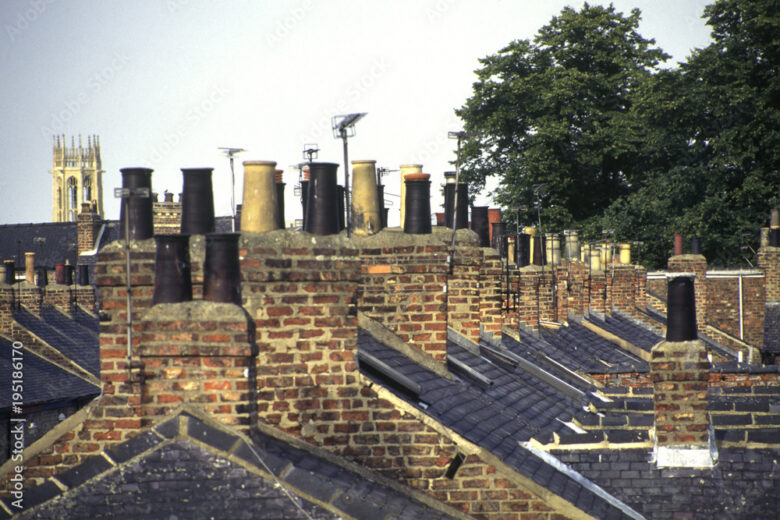
How Often Should I Get the Roof of My House Inspected?
Although largely out of sight, your roof certainly shouldn’t be out of mind, and it’s a good idea to schedule in regular checks in order to catch any issues before they become serious – and expensive.
Why should I have my roof inspected?
Simply put, a secure, stable, watertight roof is essential to any building, and even a small compromise to its integrity could have serious implications for your home. Of course, it can be tempting to think that as there are no obvious signs of any issues, it’s best not to go looking for them, but small problems can soon escalate into major repairs, and fixing these does not come cheap.
You can carry out preventative maintenance by having regular checks so you’re not suddenly hit by the need to do major works. For example, replacing a few broken tiles will only cost you in the low hundreds of pounds; a full roof could be nearer the £10,000 mark.
Not only that, but a thorough roof check won’t just look at the roof itself. It will also identify any issues with guttering, drainpipes, chimneys, flashing, and any other associated items that can impact if they start to deteriorate.
It’s a good idea to plan these checks around the seasons. Scheduling in an inspection autumn with all the cold, wet, windy and frosty weather that it can bring is a great way to be confident your roof is in good condition and literally able to weather any storms. If it’s a harsh winter, with extreme frosts, strong winds and the like, a check after this is also advised so you’re clear on whether any damage has been caused, rather than simply letting issues worsen over time. Of course, this will be even more essential if your roof has been in place for ten years or more. Not only that, but professional roof inspections can be invaluable if you’re looking to claim on your insurance for storm damage, providing clear evidence of the damage caused, how it was caused and how much it’ll cost to be fixed.
Remember, regular checks and maintenance will also extend the life of your roof, potentially saving you thousands, and ensure easily fixable wear and tear repairs don’t become more serious.
Can I do it myself?
As a homeowner, it’s certainly worth keeping an eye out for any tell-tale signs that you may have a problem with your roof. And remember, these could be internal as well as external. For example, signs of moisture on walls and ceilings could indicate a leak, as could damp spots around the chimney. If the property feels cold or you’ve had a spike in your heating bill, it could be that your roof ventilation is damaged. You may also be able to see if drainpipes are loose, guttering is decaying, or you have an accumulation of moss and other debris that needs to be cleared.
It’s also helpful to know what your roof is made of, as this will help you know what to look out for. For example, with asphalt shingles, common issues can be bare spots where it’s become brittle as well as torn or warped shingles. Slate roofs can have a long lifespan, but leaking can occur, so watch out for this, while metal roofing signs requiring action will include rusting or corrosion.
Should you discover any of these, further investigation will be necessary, so it’s time to call in a professional. An experienced roof surveyor will know exactly what to look for; they’ll know what is a cosmetic issue and what could become a serious problem if left unchecked; they’ll also be able to advise on measures that need to be taken to ensure the integrity of your roof both now and in the longer term.
Not only that, but professionals will have access to the tools needed to safely and effectively carry out a roof survey. This can include polecams and drones that will give a much clearer image of what’s going on in those hard to reach places without the dangers of navigating ladders or having to dig out binoculars.
What a professional roof inspection could uncover
Indeed, a professional roof inspection will be much more thorough and much more informed than simply doing it yourself. Issues frequently uncovered during roof surveys include any tiles, flashing or guttering in poor condition, leaks or potential future problem areas, roof sag, chimney damage, leaks and lingering moisture on flat roofs and more. A professional inspection will look at your entire roofing system and give you a clear idea of the condition of all of its components. If it’s deemed that work is necessary, you’ll be clear on precisely what needs to be done, and you can use this knowledge to ensure your roofing contractor does what is required for a fair price.
The Novello Approach
When it comes to roof inspections and surveys, Novello’s drone roof survey offers several clear benefits. By utilising drone technology, we can get up close and personal with every aspect of your roof, even taking real-time, ultra-clear 4K videos and high-resolution photos so you can see any issues. You’ll also receive a comprehensive report that includes the in-depth data received during your aerial inspection. We’ll explain the construction of your roof and highlight the state of critical aspects such as flashing, guttering, tiles, chimneys and more, clearly highlighting any areas that need work or are likely to in the near future.
Our drone surveys are carried out by RICS qualified, Civil Aviation Authority certified surveyors who are experts in their field and who will always be on hand to ensure you’re clear on the results and your possible next steps.
Novelo drone roof surveys are quick, efficient and accurate, and they provide everything you need, whether it’s a regular check on the state of your roof, to identify the cause of a specific problem, or to encourage your insurance company to take action.
Contact us or get an Quotation now to find out more about our roof surveys and drone roof surveys.

